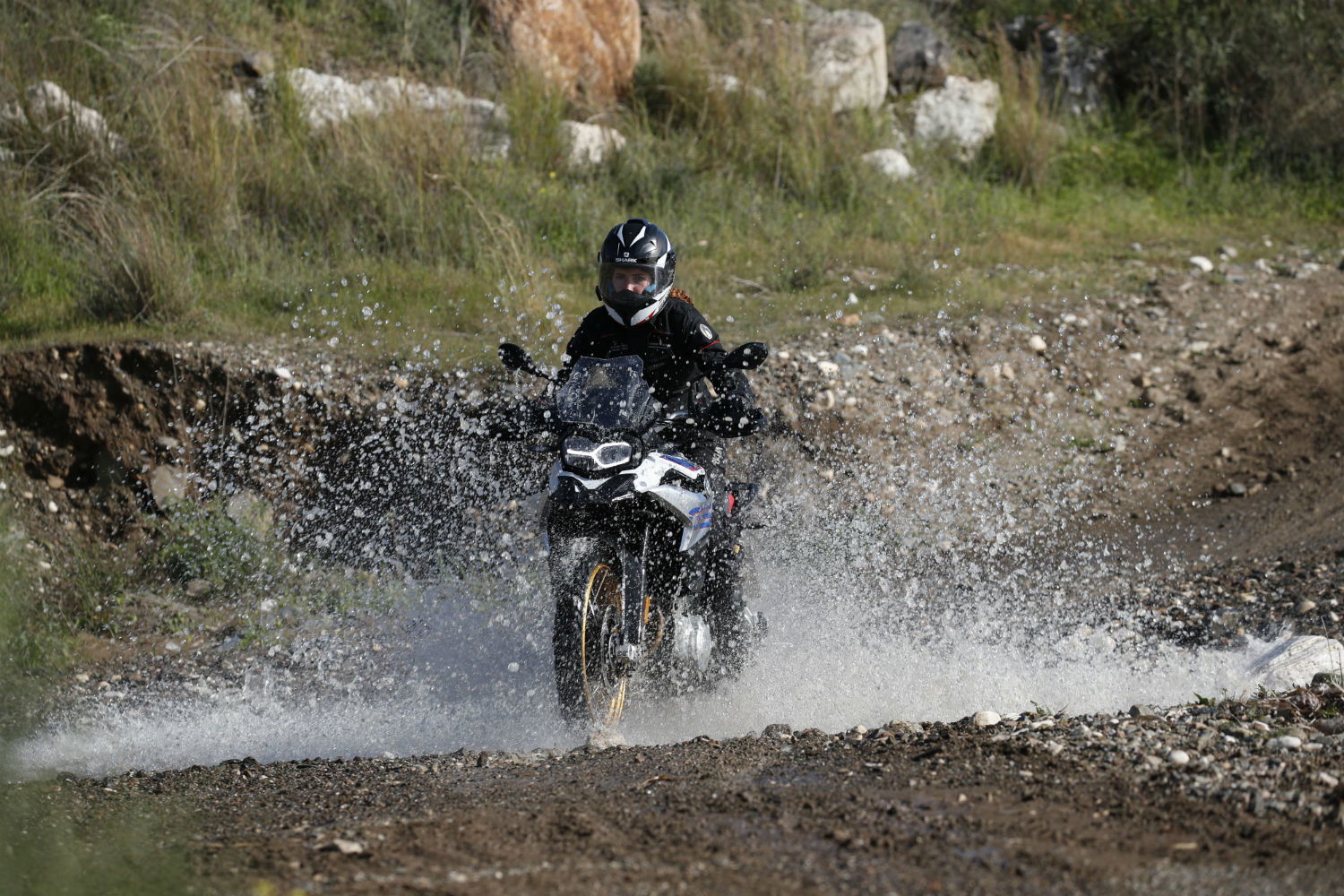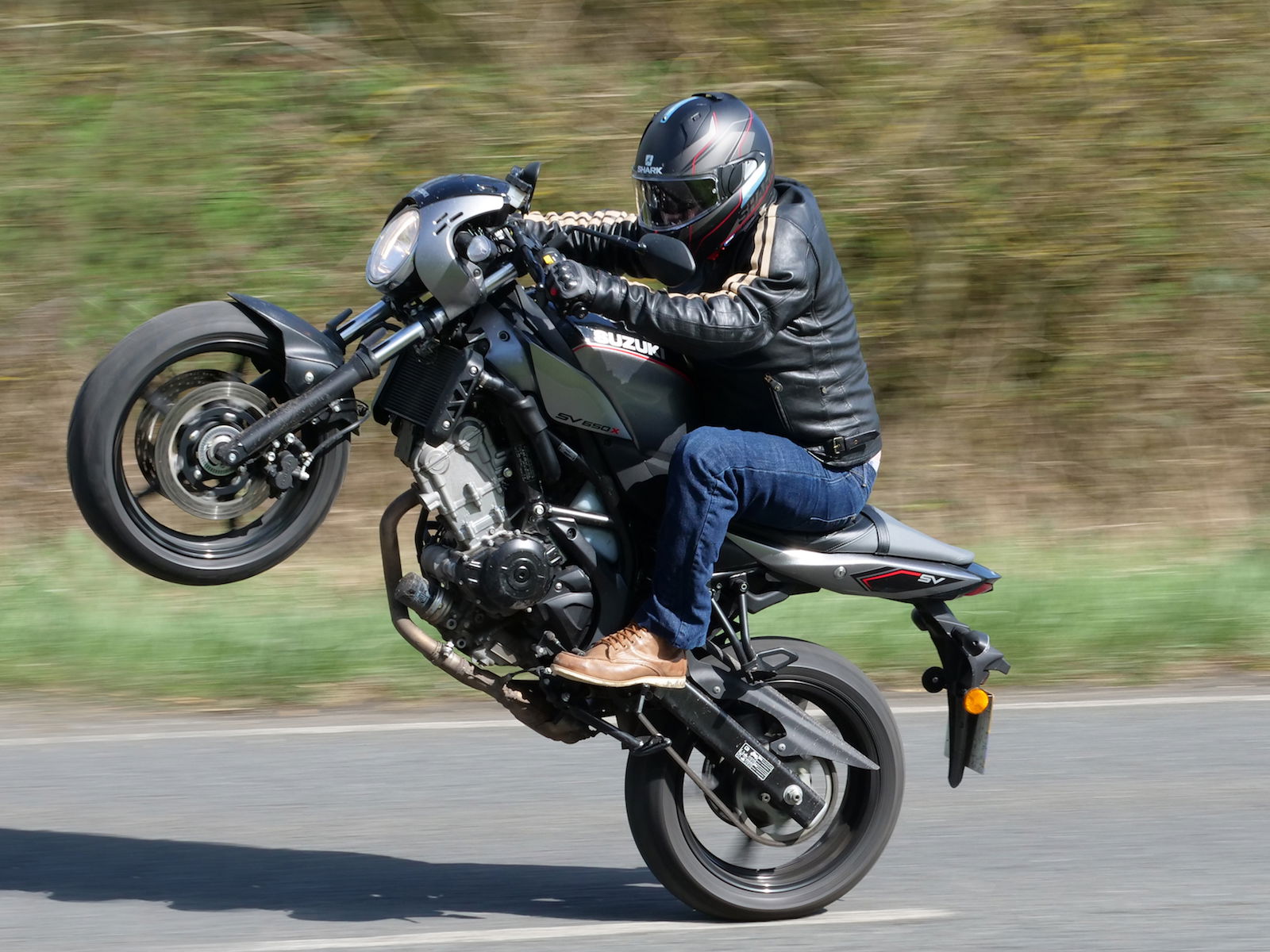Launch test: Honda's slightly mental CB1000R
Honda's new CB1000R hooned at Ascari and surrounding roads

Ten years is a long time in motorcycling. Valentino Rossi was MotoGP world champion while Troy Bayliss dominated World Superbikes. Oh, and Honda launched the CB1000R, a bike that promised so much but just didn’t quite deliver on all counts. But that was 2008, and the difference a decade makes was illustrated to great effect at the launch of Honda’s all-new naked litre bike in Spain this week.
It’s unfair to say the old CB1000R was underwhelming, but having tested it for this very website against its spunkier European rivals back in 2009, it really felt as though Honda had missed a trick. All the ingredients were there: a typically Honda-neutral chassis; a 2006 Fireblade motor; a sweet single-sided swinging arm and angular styling that still doesn’t look particularly dated.
The trouble was, up against the likes of Ducati’s Streetfighter and Triumph’s Speed Triple, the retuned (read massively detuned) motor lacked more than just horsepower; it lacked soul. Throughout the launch, Honda made quite a point of telling us that styling was its number one priority. And while just a quick glance at the end result of several years of collaboration between Italian stylists and Japanese engineers — along with public feedback from the ‘Neo Sports Café’ concept bikes shown at Milan over the years — backs that up, the improvements are far more than skin deep. But then the Japanese are well known for their modesty.
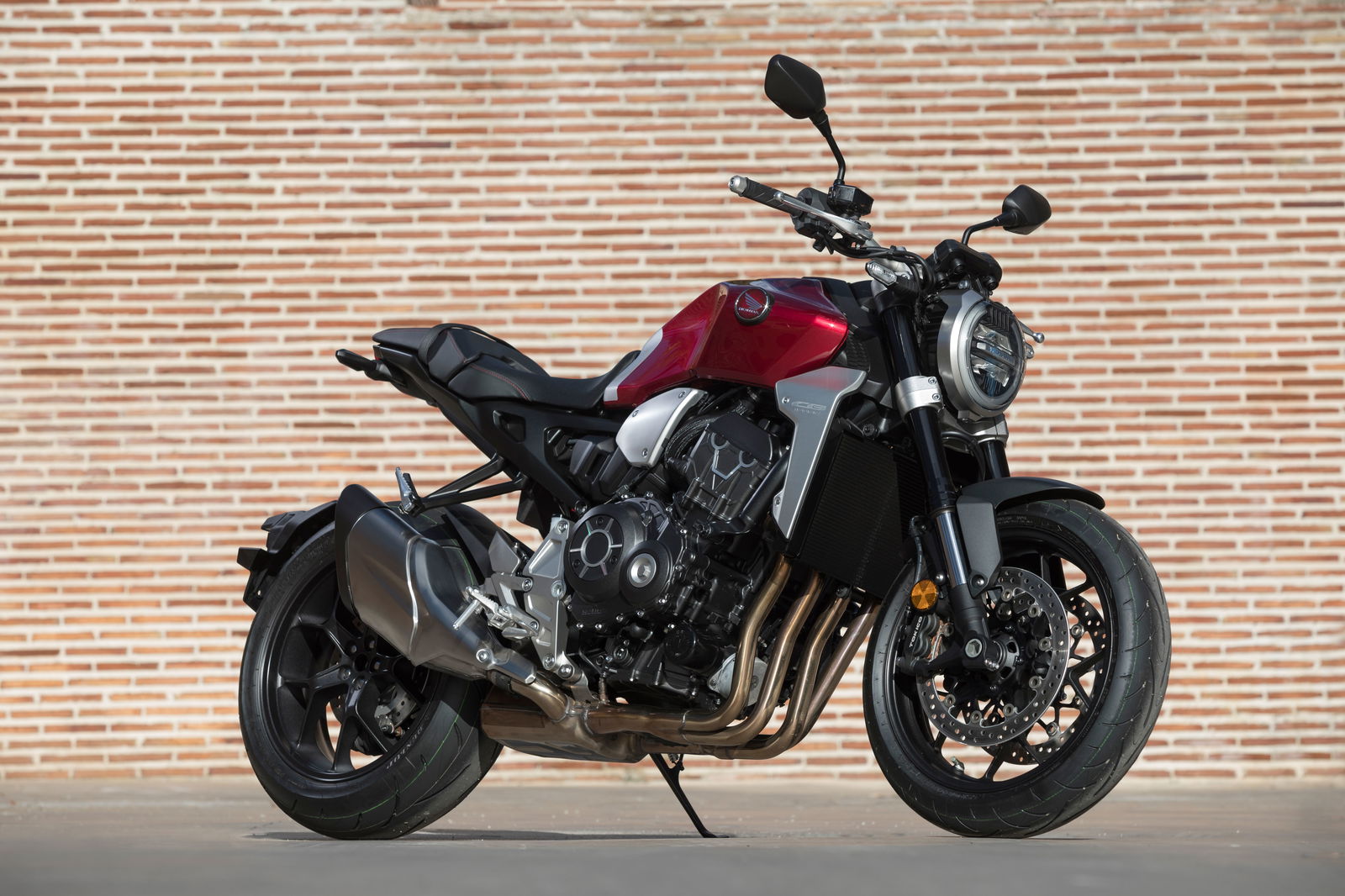
The new bike looks a world away from its predecessor. I’m not going to waste words describing it; you can make your own mind up whether you like it or not. But what you can’t see in photos or understand from reviews is the attention to small details that make this revamp all the more impressive. But if you can’t be arsed to get yourself along to a Honda dealer, then I suppose I’d better have a go at the latter for you anyway.
The bike looks incredibly short but the wheelbase is actually a few millimetres longer than the old one due to the decision to fit a fatter 190-section rear tyre. This illusion of shrinkage comes from moving the ignition barrel in front of the fuel tank rather than plonking it in the top yoke which in turn meant Honda were able to position the compact headlight far closer to the rider.
Similarly, moving the numberplate to an ugly lump of plastic that bolts to the otherwise gorgeous single-sided swinging arm means the rear end needs to be no longer than the pillion seat. We can see sales of tail tidies soaring in May when this bike hits the showrooms.
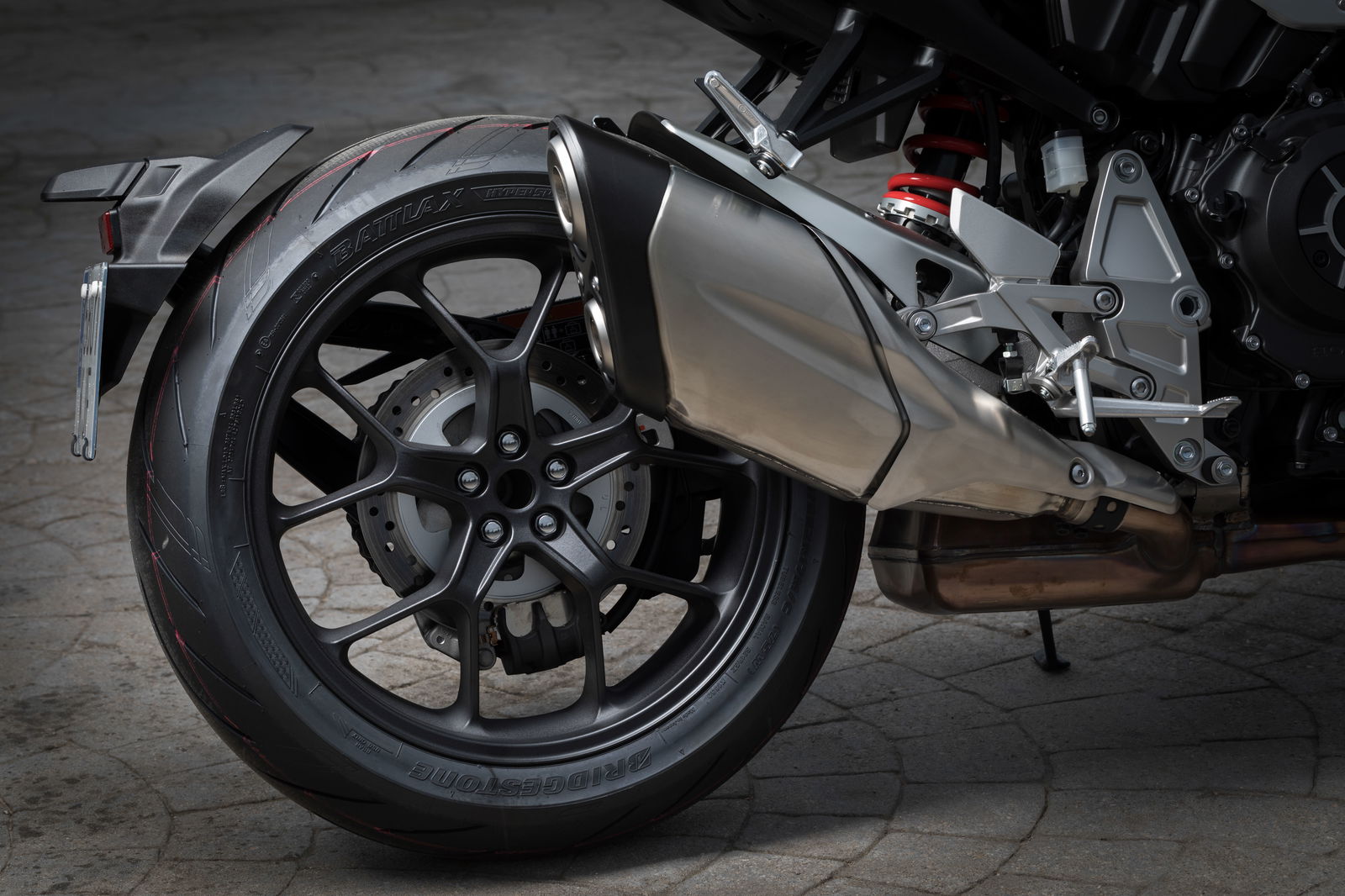
When it comes to a top quality finish, this bike will only have enhanced Honda’s reputation. Those brushed aluminium accents on the front mudguard, instrument, radiator and injection shrouds are just that: aluminium not faux look-a-like plastic. The CB1000R logos aren’t decals; they’re etched into the metal.
Then there’s the detailing on the clutch cover and cylinder head that has been complemented by plain steel bolts along with some very neat machining on the footrest hangers. All small details but they really pop out when you see the bike in the metal and the lack of plastic (only six small plastic parts have been used throughout the entire bodywork) help the bike to feel as though it’s been machined out of one solid lump of steel. And yet it’s 12kg lighter than the old model.
Much of that weight has been lost in the gruff-sounding four-into-two exhaust system (4.5kg) while the bulk of the rest has been shed thanks to the clever design of the mono backbone steel frame, saving a further 2.5kg as well as adding neat touches such as pillion grab handles machined into the rear subframe itself, saving a few more precious grams. It also allows the seat be slimmer (the pad could be a little softer though), so shorter riders shouldn’t struggle so much with its 830mm height.

Launch test: Honda's slightly mental CB1000R - page two
The same 2006 Fireblade motor as used in the outgoing model has been employed in the MY18 machine. But it’s a very different animal. As well as being treated to a slipper clutch, power is up by 20bhp thanks to forged, rather than cast, pistons, and the valve lift has been increased.
Feeding the beast are bigger throttle bodies (up from 36 to 44mm) and a new airbox that not only rams more air down its throat but has also been engineered to growl. The Japanese engineers were terribly pleased that I’d noticed. Controlling all of this is Honda’s somewhat controversial throttle-by-wire system (TBW) that was heavily criticized on the 2017 Fireblade.
Well, I haven’t ridden a 2017 Fireblade so I can only go on what I’ve ridden. And I have to say it’s bloody good. I’m happy to report that Honda’s aim of giving the bike more character goes way further than a growling airbox, and much of it is thanks to the TBW. Project leader Soya Uchida clearly knew what he was up against with the likes of Triumph’s new Speed Triple and gravely told us that the engine: “Must have character. Very important.” He didn’t really say much else, but he smiled a lot. I liked him.

Engineering a rush of power and a huge surge of torque to chime in between 6,000-8,000rpm doesn’t come without its problems though, and the TBW allows a fat dollop of grunt in the midrange without making the bottom end feel like a light switch. It’s clever stuff, and the throttle take-up is never anything but smooth, regardless of where you are in the rev-range, building up to the 11,500rpm redline — linear where you want it before exploding on corner exit.
It’s a neat trick when you can make a bike that will dare you to thrash it yet not complain when all you want to do is short-shift and cruise — from 2,000rpm in pretty much any gear this bike will pull cleanly and without making you feel like a novice. Of course, the electronics can be tweaked by the rider, too. Four modes: Sport, Standard, Rain and User can all be accessed at the prod of a left thumb.
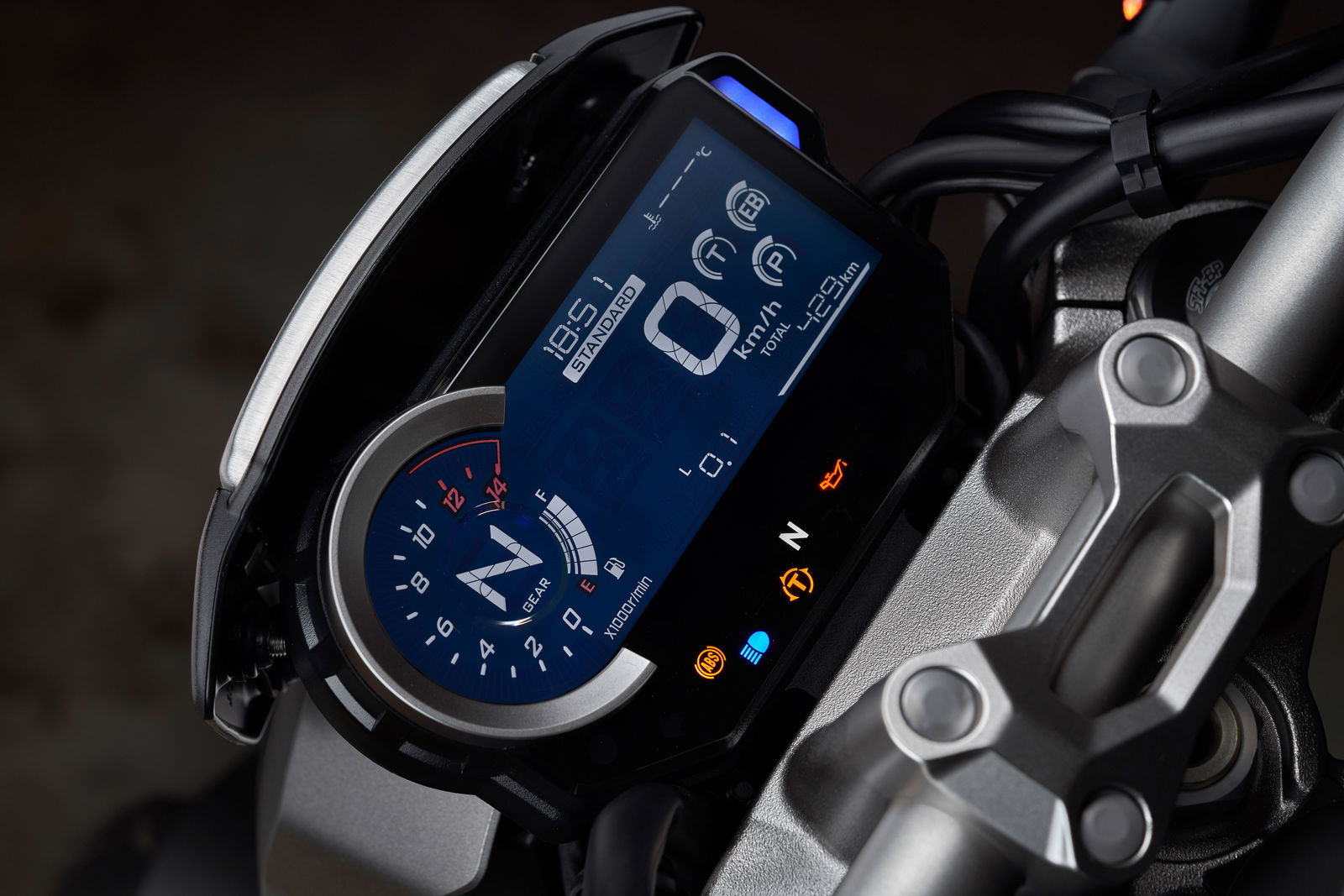
These all use more or less of each variable — power (P), torque control (TC — essentially traction control) and engine braking (EB), with User mode allowing each element to be adjusted to suit with the option to fully disable the TC if, for example, you enjoy power-slides and wheelies.
The LCD instrument panel is easy to read too (the gear indicator is huge), and fiddlers will love the various settings for shift lights, etc. But best of all, for men over 40 such as myself, it’s easy to operate without any need for a millennial or a YouTube tutorial.
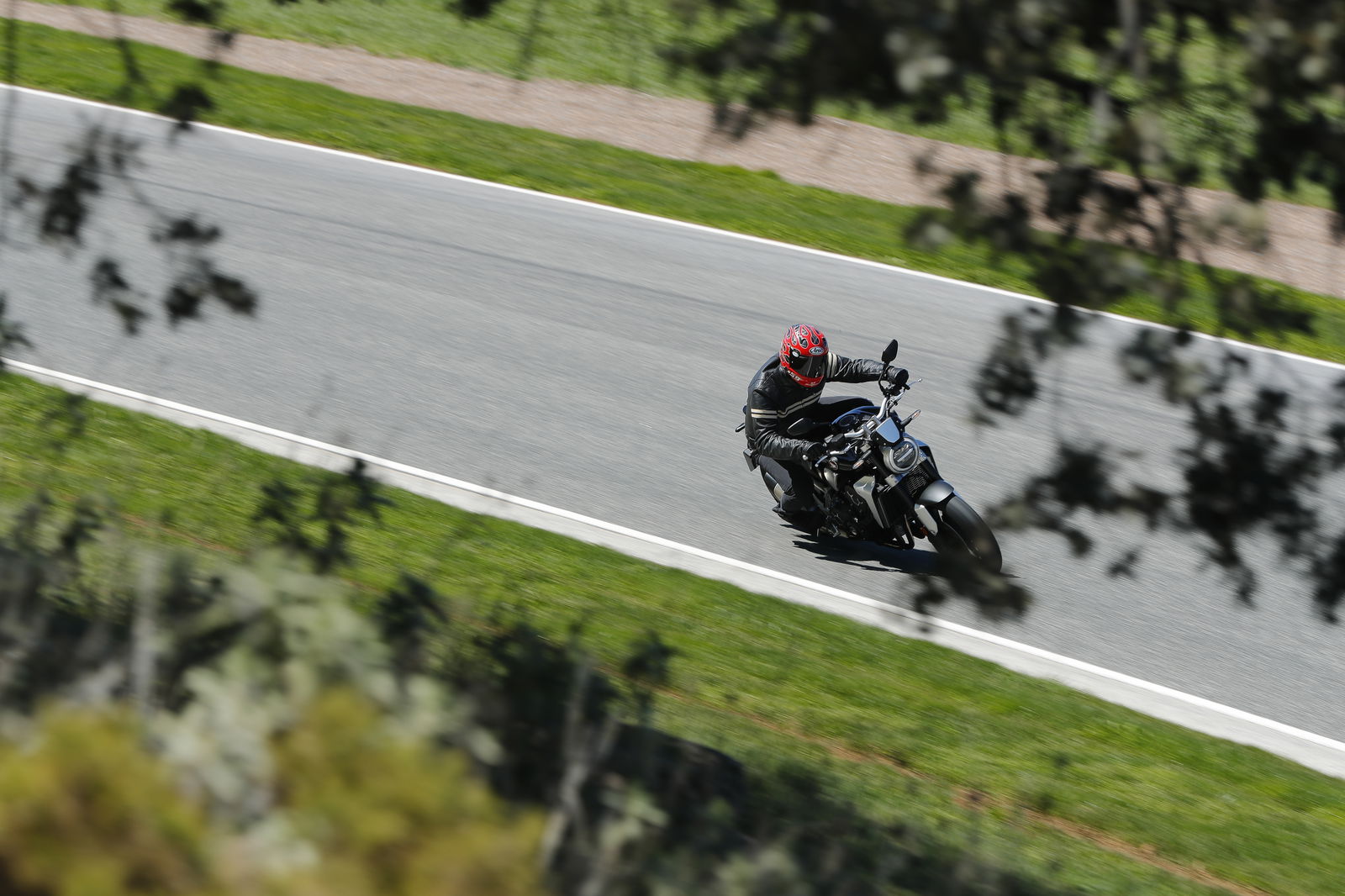
Launch test: Honda's slightly mental CB1000R - page three
For a naked bike, the CB is fairly firmly sprung which helps the bike to hold and recover its geometry quickly through fast direction changes and into and out of slower corners. The shock is fairly basic but feels plush and progressive.
The fully-adjustable Showa ‘Big-Piston’ forks have a similar progression and handle bumpy roads but without diving like an Italian footballer at the first stroke of the brake lever. The steering is super-fast and takes a little getting used to — it’s a cliché but you really do steer this bike with your eyeballs. Stability doesn’t seem to be an issue, and I could only upset the bike by being overly aggressive, and even then was only reprimanded with a disapproving wag of the bike’s head.
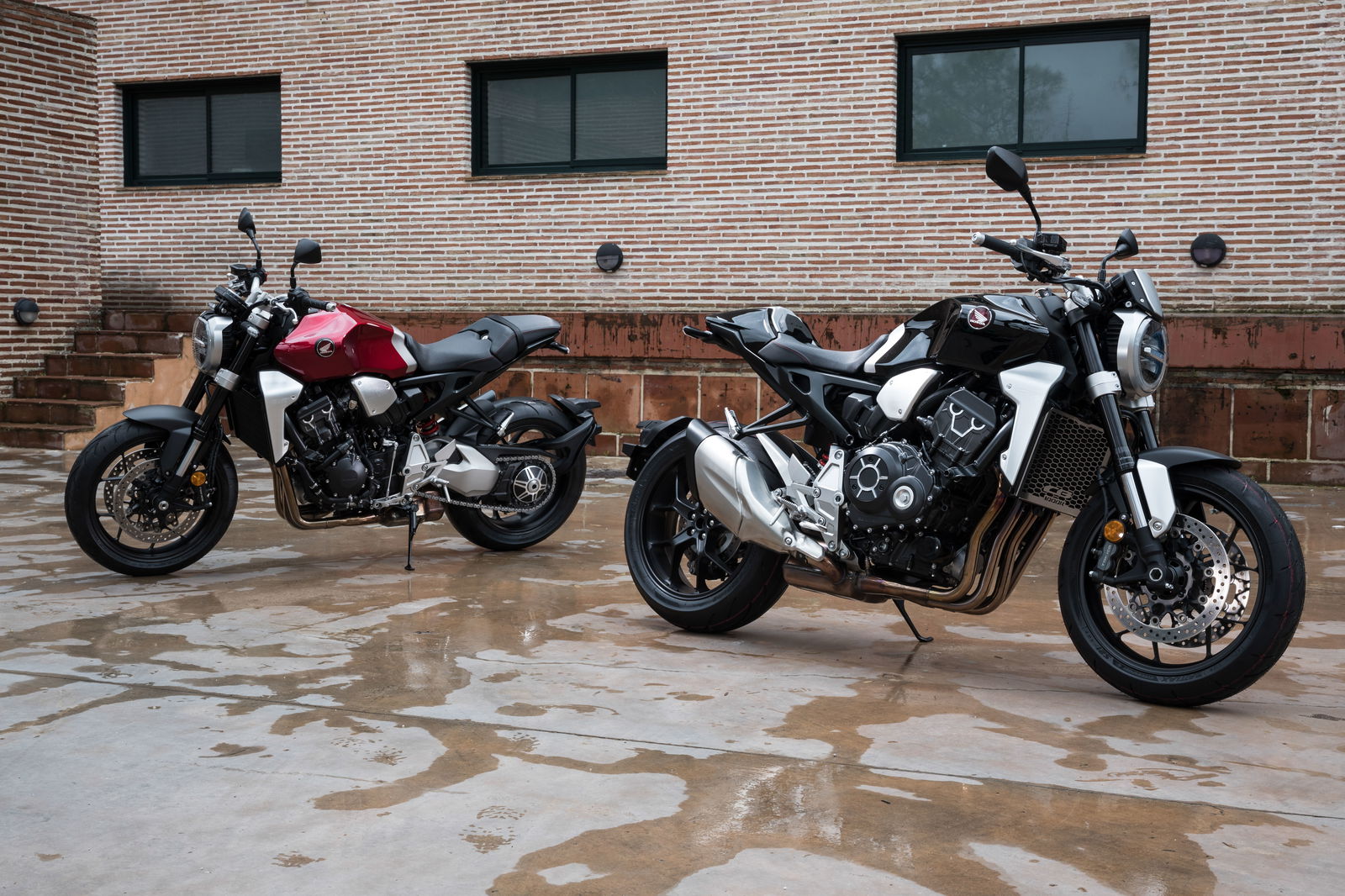
The brakes are powerful with good modulation and I didn’t notice the ABS unless I deliberately grabbed a handful of brake; if you can’t tell it’s there, then it’s working perfectly. It is an easy bike to ride — however you want to ride it — but if there are two things I’d change then they’re both black and round. In my opinion the OE Bridgestone S21 tyres let this bike down.
On the cold Andalusian roads on our way to the Ascari race resort, while I didn’t have any real moments, neither did I have the confidence to push in the corners or carry a great deal of lean angle. Even on the track I didn’t feel as though I could trail brake with much conviction. If grip isn’t the issue, feel certainly is, and my first modification would be to get these on eBay and fit something softer and stickier to exploit the bike’s true potential.
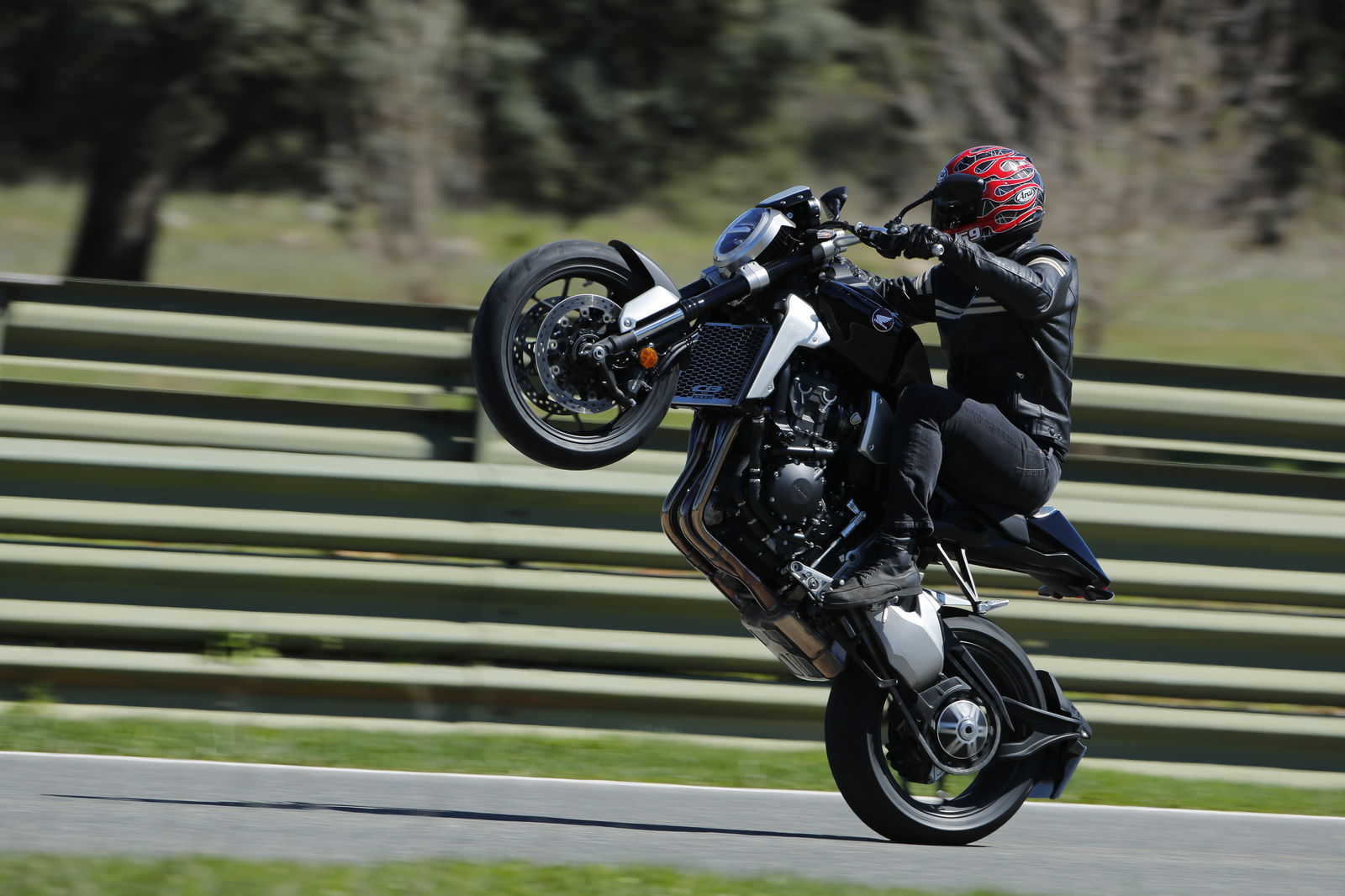
Verdict
There’s no question that Honda has moved the CB1000R on a huge leap. In a naked market that’s often hard to define, there will be plenty of debate as to which bikes are its direct rivals. Some would say that it’s 20bhp down on the BMW S1000R and 15 down on the Yamaha MT-10. Others would argue that it’s streets ahead of its retro-modern counterparts such as the BMW R nine T.
Whatever your reasons for being interested in this bike, tyres aside, I’m struggling to think why you’d be disappointed. It looks amazing, it’s fast, it handles, it’s packed with useful technology and it’s comfortable. But above all else, at long last, the CB1000R finally has what it needed to be more than just an also-ran. Finally, it’s got a soul.
And there's more...
We tested the more expensive ‘+’ variant that comes with heated grips, brushed aluminium front mudguard panels and rear hugger panels, brushed aluminium inserts on the flyscreen and single seat cowl, a radiator grille with a CB1000R logo and top it all off, a quickshifter.
These parts are all very welcome and without doubt improve the bike. But are they worth a grand? Well, yes and no. The heated grips were brilliant but I was less impressed with the quickshifter. It wasn’t terrible per se, but if you’re looking to start modifying your CB1000R (and there’s no doubt custom bike builders will be clamouring for this bike) perhaps junking the catalytic converter and going for a remap, then you may as well extend that to an HM quickshifter or similar that can be programmed to suit your style of riding.
So if you’re looking to ride the bike as is, then yes, you might as well spend 12 instead of 11 large. But if you’re going to start tinkering, we’d suggest you save that bag of sand for a few parts and some dyno time. Can’t wait to see what the tuners and builders do with this bike…
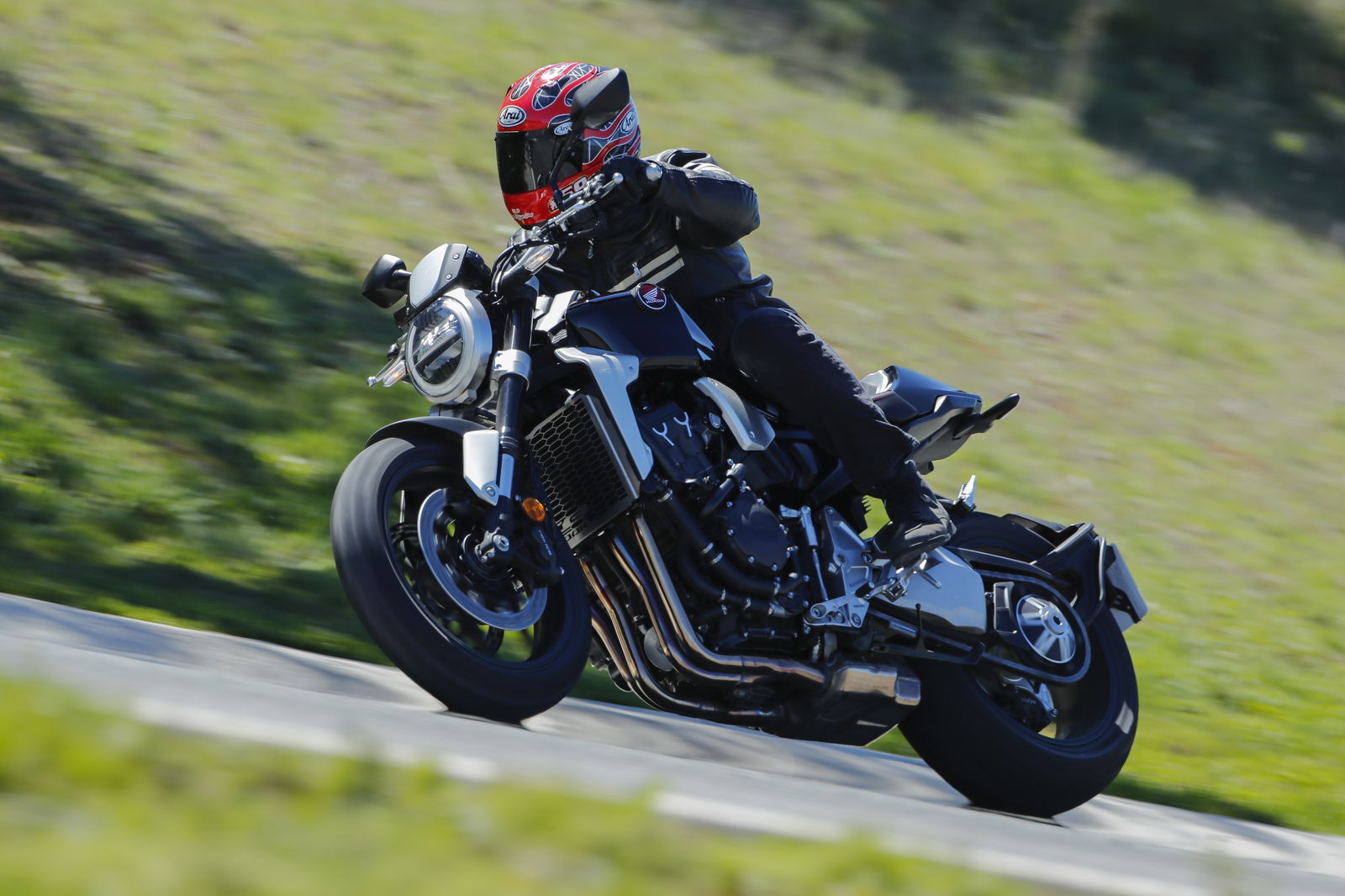
Tech feck
ENGINE | |
Type | Liquid-cooled DOHC In-line 4 cylinder |
Valves per cylinder | 4 |
Engine Displacement (cm³) | 998cc |
Bore and Stroke (mm) | 75mm x 56.5mm |
Compression Ratio | 11.6:1 |
Max. Power Output | 143.5 bhp @ 10,500rpm |
Max. Torque | 104Nm @ 8,250rpm |
FUEL SYSTEM | |
Carburation | PGM-FI |
Fuel Tank Capacity | 16.2 litres |
Fuel Consumption | 48.6 mpg |
ELECTRICAL SYSTEM | |
Starter | Electric |
Battery Capacity | 12V/8.6AH |
DRIVETRAIN | |
Clutch Type | Wet, multiplate clutch |
Transmission Type | 6-speed |
Final Drive | Chain |
FRAME | |
Type | Steel mono backbone |
CHASSIS | |
Dimensions (LxWxH) | 2120mm x 789mm x 1095mm |
Wheelbase | 1455mm |
Caster Angle | 25 degrees |
Trail | 100mm |
Seat Height | 830mm |
Ground Clearance | 135mm |
Kerb Weight | 212kg |
SUSPENSION | |
Type Front | Showa SFF-BP USD fork |
Type Rear | Showa BRFC (Balance Free Rear Cushion) |
WHEELS | |
Rim Size Front | Cast aluminium |
Rim Size Rear | Cast aluminium |
Tyres Front | 120/70 ZR17 |
Tyres Rear | 190/55 ZR17 |
BRAKES | |
ABS System Type | 2 channel |
Front | 310mm double disc |
Rear | 256mm single disc |
INSTRUMENTS & ELECTRICS | |
Instruments | LCD |
Headlight | LED |
Taillight | LED |
